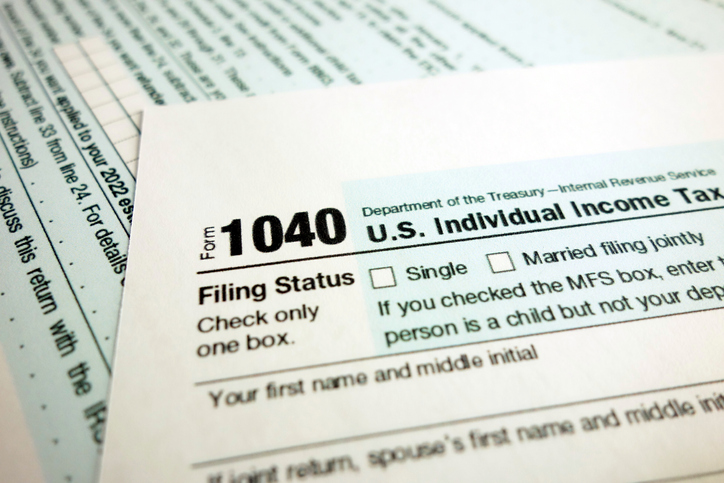 In the 2020 and 2021, a very limited sense of “we are all in this together” prevailed and various tax measures were put in place to ease the pain of the COVID-19 pandemic. For 2022, most of those measures are going away, because apparently everything’s normal again or, more likely, politicians aren’t worried that economic hardship for those below the “big donor” level could cost them their positions. Below we highlight some key changes you should consider for your upcoming tax return; there are other detailed changes out there, this is not a complete list.
In the 2020 and 2021, a very limited sense of “we are all in this together” prevailed and various tax measures were put in place to ease the pain of the COVID-19 pandemic. For 2022, most of those measures are going away, because apparently everything’s normal again or, more likely, politicians aren’t worried that economic hardship for those below the “big donor” level could cost them their positions. Below we highlight some key changes you should consider for your upcoming tax return; there are other detailed changes out there, this is not a complete list.
We are going to start with something that might have slipped under the radar for some: the requirements for third-party payment settlement networks, such as PayPal and Venmo, to send you and the IRS a 1099-K if you receive over $600 during the year for the sale of goods and services (money sent under the “Friends and Family” option should not trigger the filing). Previously, that requirement kicked in at $20,000 and if you had more than 200 transactions. So, if you’ve had a small side-hustle selling for profit online, you need to be aware that not only has the obligation to report that income always existed, but now the IRS is much more aware of you receiving that income. If you sold your used personal property at a loss, you should square away your documentation just in case the IRS takes an interest. If you were collecting funds for your model train club, knitting group, or dart team and it wasn’t sent as “Friends and Family”, you should collect correspondence and receipts showing this was not a business enterprise (and make sure your club mates use Friends and Family in the future).
The Child Tax Credit is falling back to its pre-2021 level of $2,000 per child under 16 from $3,000 for 6- to 17-year-olds and $3,600 for under 5s. The CTC, which was fully refundable in 2021, also reverts to being only partially refundable and only to the extent 15% of earned income exceeds $2,500.
Similarly, the Child and Dependent Care Tax Credit diminishes for 2022 with the maximum credit percentage dropping to 35% from 50%, a reduction in the types of expenses eligible, and
Adding to this general theme of reducing help to working families, the Earned Income Tax Credit sees an increase in the age to qualify (25 versus 19), reinstatement of the maximum age limit of 65, and the maximum credit available for childless working falls to $560 from $1,502.
The “above-the-line” deduction of up to $300 for charitable deductions has been phased out and again charity giving is only deductible if you itemize. And of course, the 60%-of-Adjusted Gross Income limit on cash donations for those who itemize is back in play after being suspended for 2020 and 2021.
Teachers get a break with an increase to $300 ($600 if married-filing jointly) for the above-the-line (i.e., you don’t have to itemize to take this deduction) for digging into your own pocket for supplies needed to fill the gap from chronic school under-funding.
The Residential Clean Energy Credit is no more! It’s been renamed to the Residential Clean Energy Credit (I want to meet the staffer who made that their “big win” for the year)
Standard Mileage Rates got an unusual two-stage bump for 2022; the rate for business was 56 cents per mile in 2021, increased to 58.5 cents for the first six months of the year, and increased again to 62 cents for the second half. Medical Mileage Rates increased from 16 cents in 2021 to 18 cents for the first six months of 2022 and then to 22 cents for the last six months (the moving only applies to active duty military). Charity rates remain at 14 cents per mile (you get the feeling our lawmakers aren’t great fans of charities).
We won’t bore you with the details of the various inflation-driven changes to things like income tax brackets, income levels applicable to Long Term Capital Gains Tax Rates, and changes in the standard deductions. You should be aware to look these up for detailed tax planning.
We will note that the limits on the 20% self-employment income deduction for pass-through income rose to $340,100 for joint filers and $170,050 for other from $329,800 and $164,900.
In summary, your 2022 tax return is going to look a bit different from 2021 due to a lot of these changes and, in general, reflects a less kind and generous tax situation. Please know that the above is not inclusive of all changes that may be relevant to you, and you should speak with your tax expert to assess your own situation.
